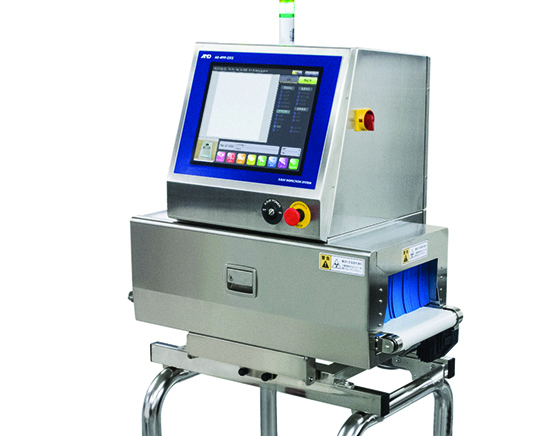In the dynamic and demanding landscape of the food industry, ensuring product quality and safety is very important. With advancements in technology, food inspection systems have evolved significantly, and one of the groundbreaking innovations in this realm is the food X-ray machine. This sophisticated equipment has revolutionized quality control and assurance in the food industry by providing non-invasive, highly accurate, and efficient methods for detecting contaminants, defects, and foreign objects in food products.
Understanding Food X-Ray Machines
1. How Food X-Ray Machines Work
Food X-ray machines utilize advanced imaging technology to inspect food products for a wide range of quality and safety parameters. These machines emit X-ray radiation through the food items, and the resulting images are captured using detectors. Unlike traditional X-rays used in medical diagnostics, food X-ray machines operate at lower energy levels, ensuring product safety and compliance with regulatory standards.
2. Detection Capabilities
Food X-ray machines are designed to detect various contaminants and defects, including:
· Metal fragments or foreign objects
· Glass, stones, or plastic particles
· Bone fragments in meat products
· Missing or misshapen items in packaged goods
· Inconsistent fill levels in containers
· Air bubbles or voids in products like chocolate or confectionery
The high-resolution images produced by X-ray machines allow inspectors to identify irregularities with precision, facilitating swift corrective actions and preventing contaminated or substandard products from reaching consumers.
Benefits of Food X-Ray Machines
1. Enhanced Product Safety
By detecting and removing contaminants and foreign objects, food X-ray machines contribute significantly to enhancing product safety and minimizing health risks for consumers. They enable food manufacturers to comply with stringent quality standards and regulatory requirements, reducing the likelihood of product recalls and foodborne illnesses.
2. Quality Assurance
Food X-ray machines play a vital role in quality assurance by ensuring the integrity, consistency, and uniformity of food products. They identify defects, inconsistencies, and deviations from specifications, allowing manufacturers to maintain high-quality standards and deliver products that meet consumer expectations.
3. Increased Efficiency
Compared to manual inspection methods, which are time-consuming and prone to human error, food X-ray machines offer unparalleled efficiency and accuracy. They can inspect a large volume of products rapidly, reducing production downtime and operational costs while improving overall productivity.
4. Compliance with Standards
Food X-ray machines help in compliance with industry standards, including Hazard Analysis and Critical Control Points (HACCP), Good Manufacturing Practices (GMP), and food safety regulations mandated by regulatory bodies such as the Food and Drug Administration (FDA) and the European Food Safety Authority (EFSA). They provide documented evidence of inspection and verification, supporting audit processes and regulatory compliance efforts.
Applications of Food X-Ray Machines
1. Inspection of Packaged Foods
Food X-ray machines are widely used to inspect packaged foods such as snacks, cereals, beverages, dairy products, and ready-to-eat meals. They detect contaminants, seal integrity issues, and ensure proper fill levels in containers, pouches, bottles, and cans.
2. Meat and Poultry Processing
In meat and poultry processing facilities, X-ray machines are employed to detect bone fragments, metal pieces, and foreign objects in raw and processed meat products. They enhance food safety and prevent contamination during production and packaging processes.
3. Bakery and Confectionery
Food X-ray machines are instrumental in the bakery and confectionery industry for inspecting baked goods, chocolates, candies, and other confectionery items. They identify defects, air bubbles, and foreign materials, ensuring product consistency and consumer satisfaction.
4. Pharmaceutical and Nutraceuticals
Beyond the food industry, X-ray machines are used in pharmaceutical and nutraceutical manufacturing to inspect capsules, tablets, and powders for quality control purposes. They detect anomalies, broken pieces, and contaminants, maintaining product efficacy and safety.
Significance in Consumer Protection
The implementation of food X ray machines is a proactive measure aimed at safeguarding consumer health and confidence. By eliminating potential hazards and ensuring product quality, these machines contribute to building trust between consumers and food manufacturers. Consumers can have peace of mind knowing that the food products they consume undergo rigorous inspection and meet stringent safety standards.
Conclusion
Food X-ray machines represent a paradigm shift in quality control and assurance within the food industry. Their ability to detect contaminants, defects, and foreign objects with precision and speed has revolutionized food safety practices, minimized risks, and elevated product quality standards.
As technology continues to evolve, food X-ray machines are expected to become more advanced, efficient, and integrated into automated production lines, further enhancing food safety protocols and consumer protection efforts.
Embracing these innovative solutions not only benefits food manufacturers by ensuring regulatory compliance and operational excellence but also reinforces consumer trust and loyalty, making food X-ray machines indispensable assets in today's competitive and safety-conscious food industry landscape.





Comments